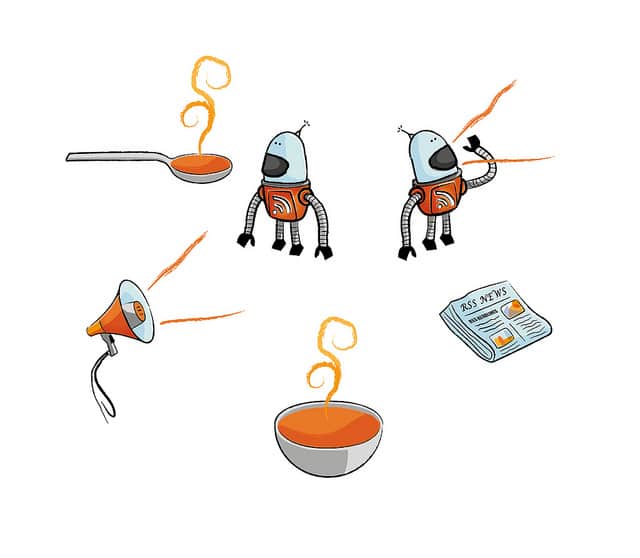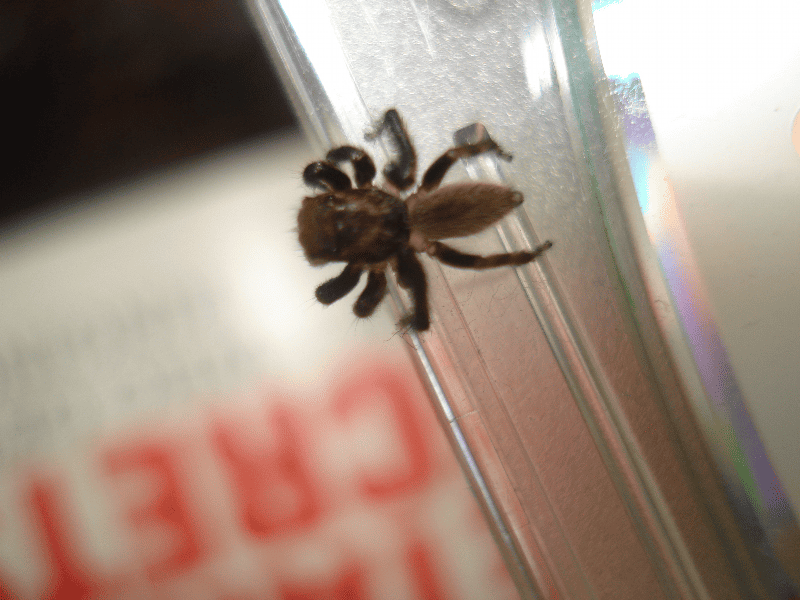
RSS Feeds for fresh content ideas
Tap into the power of RSS (Rich Site Syndication technology) feeds for a never ending source of new content ideas.
What is RSS?
Most websites offer a RSS feed that you can subscribe to get instant content delivered to you via a RSS reader.
The information is sent around using the XML file format.
RSS lets publishers syndicate their content quickly and easily around the web.
Niche-optimized site
Taping into RSS feeds gives you access to niche relevant content that you can curate (with a link to the original article).
Syndicating RSS content works similarly to how major new sites all report on the same event, at the same time, but each with its own unique spin on the events.
Now you have access to fresh, new content ideas to draw readers and visitors to your blog.
Why use RSS?
RSS feeds are awesome because:
- They provide inspiration for fresh content that is related to your niche.
- RSS feeds are updated frequently and contain content that hasn't already been overly syndicated.
- By updated your site frequently, you encourage SE to crawl and index your site more regularly.
Getting spidered frequently is good!
You want your websites to get indexed and cached as quickly as possible. That way new posts on your site are picked up by Google and can start ranking quickly.
If you regularly publish content on your site, the Google bot is more likely to visit and thus index your new content faster.
How to add RSS Feeds to SEO Content Machine
Before using RSS Feeds, you should have added a WordPress, Blogger or Post by Email blog.
Add your RSS feed
Close the Main Menu, click on [Blogs Manager] ribbon tab.
(Main Menu -> Left arrow at topmost left menu -> Blog Manager)
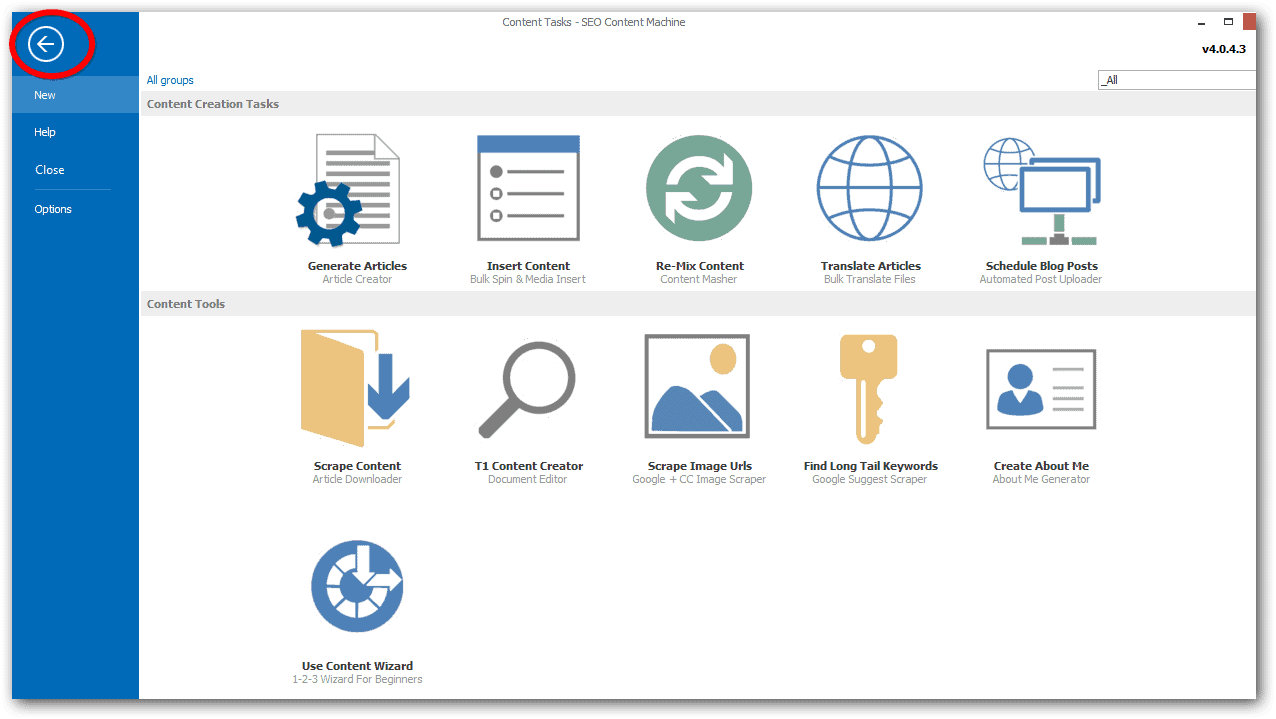
Select the blog you want to add an RSS feed to.
Select any blog on the directory tree at the left -> Add RSS Feeds
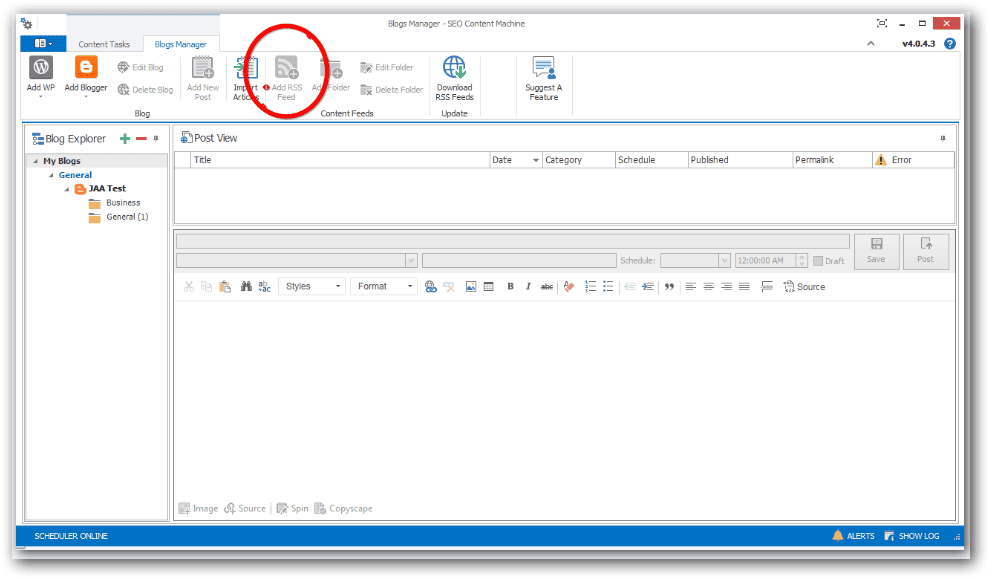
Fill out RSS feed details
On Feed Details, Feed Details section, input the Feed link.
Click on [Validate Feed] to make sure it is a real and valid RSS feed.
If there are no problems, you will see the title of the feed appearing in the Title box.
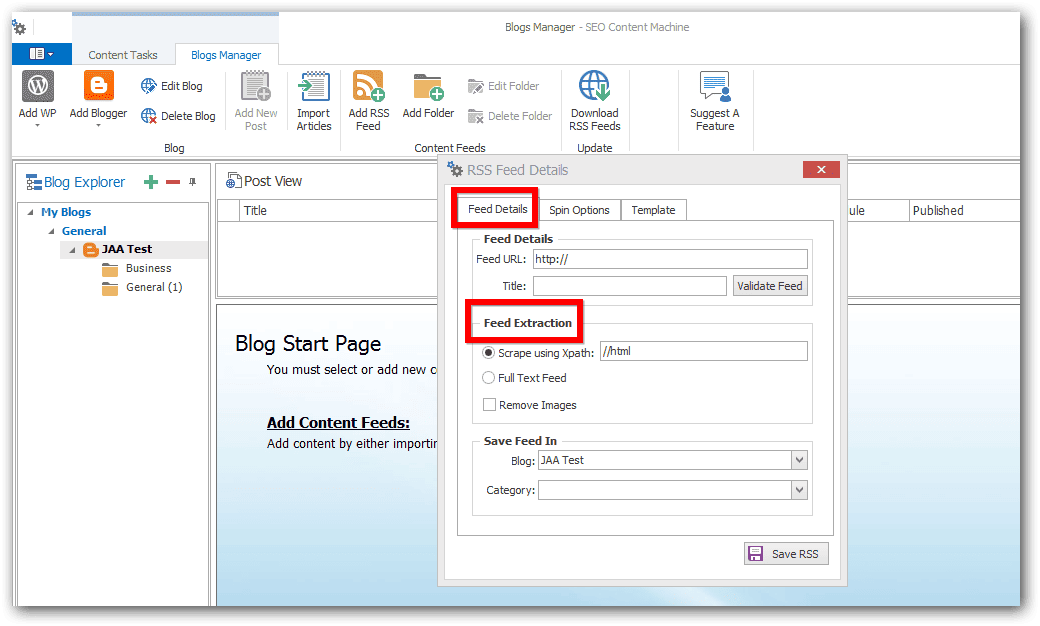
How to download content from feeds - Feed extraction
Under Feed Extraction, there are two ways to extract content:
- Xpath – if your feed contains only the title and the first 100 words, plus a “Read more” link. Select this option and the RSS engine will manually visit that page and scrape the content.
- Full Text - where the RSS contains the entire article.
If you are not sure, select option 1 - "Scrape using Xpath"
Advanced options - Spin and Template tabs
You can apply a spinner to all the RSS content so that it is re-written automatically.
RSS Feeds supports templates, meaning, as SCM downloads the content from the feeds, you shape how that content is presented.
The content box also supports spintax.
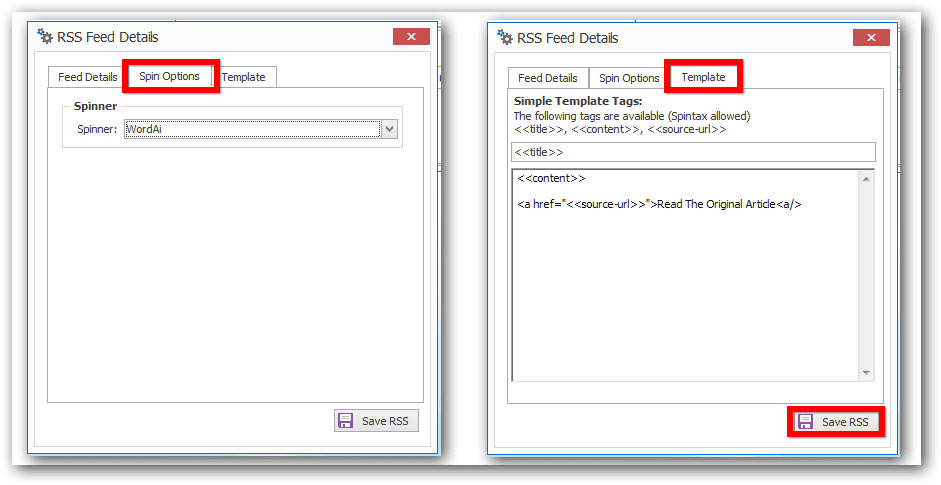
Save and run RSS
Once the options are set, click on [Save RSS]. SCM will download the top 15 recent RSS items.
After the run, you can preview the downloaded content.
The content can have spintax in it. Don't worry, when the articles are posted on your blog, SCM will take a spun variation and remove the spintax before posting it live.
Any images in the RSS feed are downloaded to your hard drive and uploaded to your blogs.
No posts are uploaded to your blog with hot linked images (bad).
How to curate RSS Feeds
Don't publish the downloaded RSS feeds *as is*.
Now you need to add bit of re-writing and curate the content before publishing it.
What is curation?
Simply put, it is to add value to the post by adding additional:
- Text
- Images
- Videos
The keyword here is: Add value.
Just republishing the RSS feed as is doesn't add value for the reader, although it will give the original RSS owner a free link to his website.
Instead, do what 99% of of RSS feed re-publishers don't do and add value!
Curation spells the difference between automated services like Google News as it has the touch of a human being who sifts, sorts, arranges and publishes the content.
SCM allows users to curate or add value to the RSS feeds with the facility to add texts, images and videos.
Add content
Add text
To add text, you can click on the body of the content and type.
Add image
Use the popup image finder to add any image to your post.
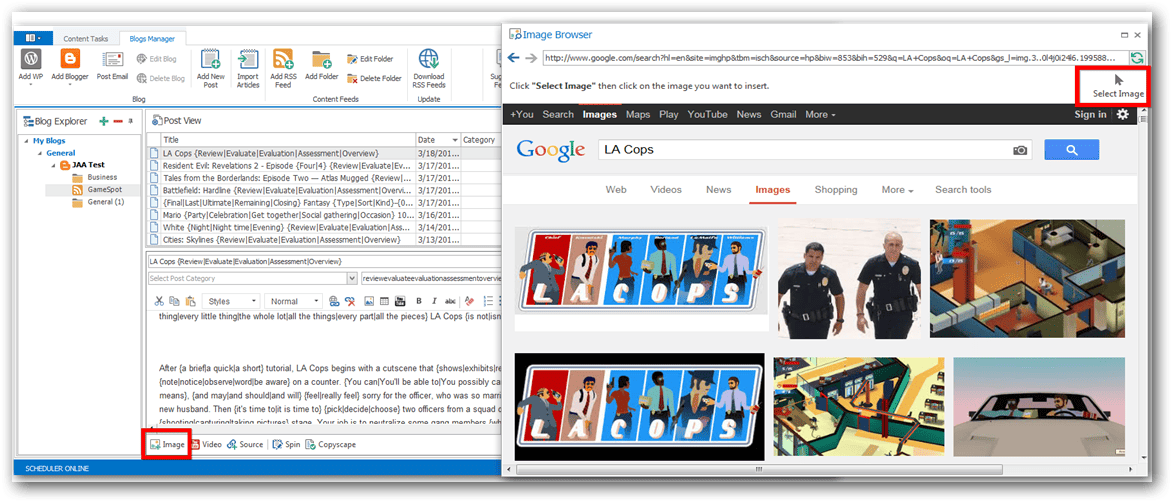
- Go to the body of the content
- Click “Add Image” at the screen’s bottom left
- You will be taken to the Image browser to select images
- Find non-copyrighted images
- Click on Select Image from the upper right corner of the Image browser screen, then the image selected
- Close the Image browser and you will be brought back to the content body
- You may use styles to position the image in the content’s body, such as, in the center
- And add text as well
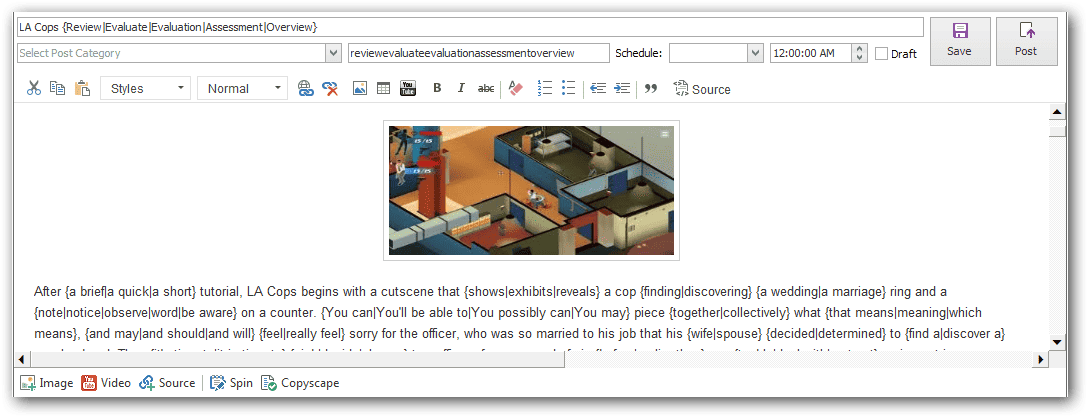
Add video
Start by finding the video and getting the embed code:
- Click on Videos from lower left and you will be brought to YouTube
- Select videos, click on your choice and click on Insert Video.
- The button copies the embed code, which you can manually copy from the video’s Share and Embed
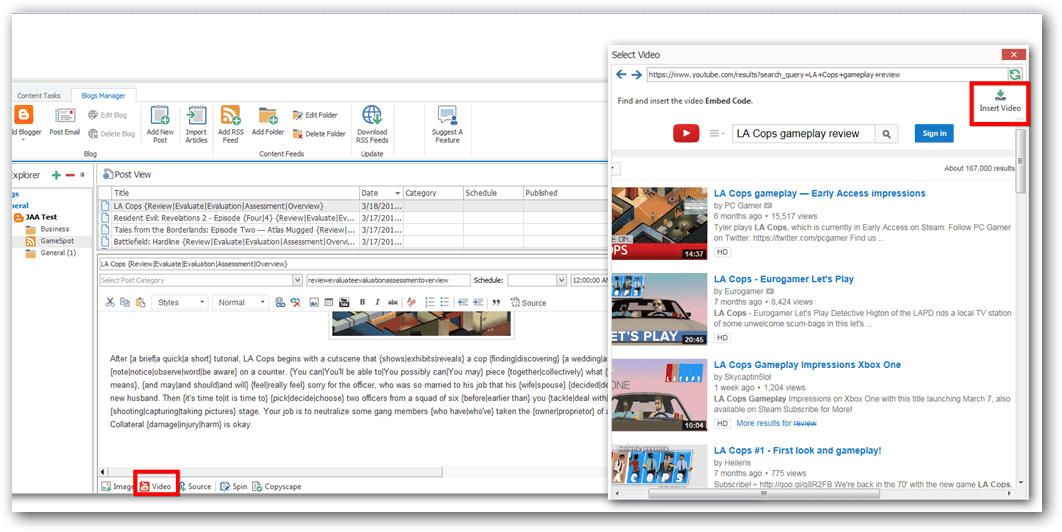
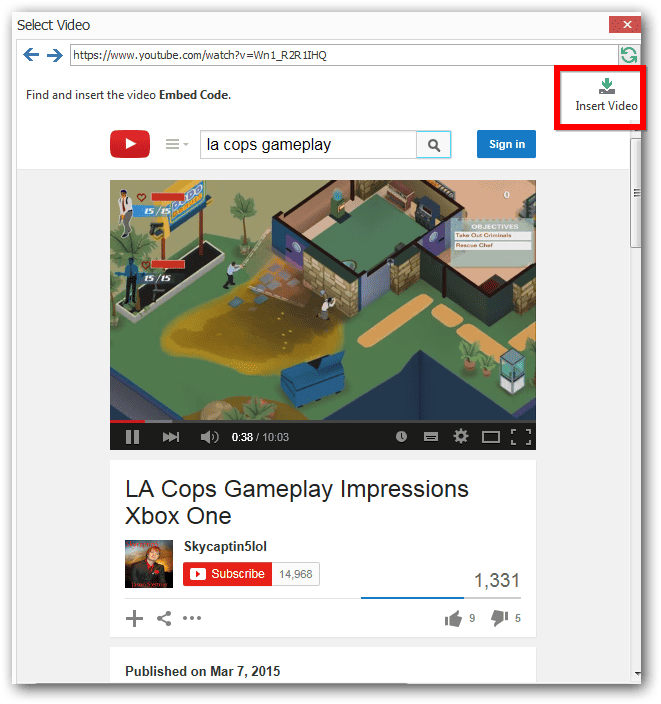
How to insert embed codes:
- In the html editor, click on the Embed YouTube Video icon above, a dialog box will appear
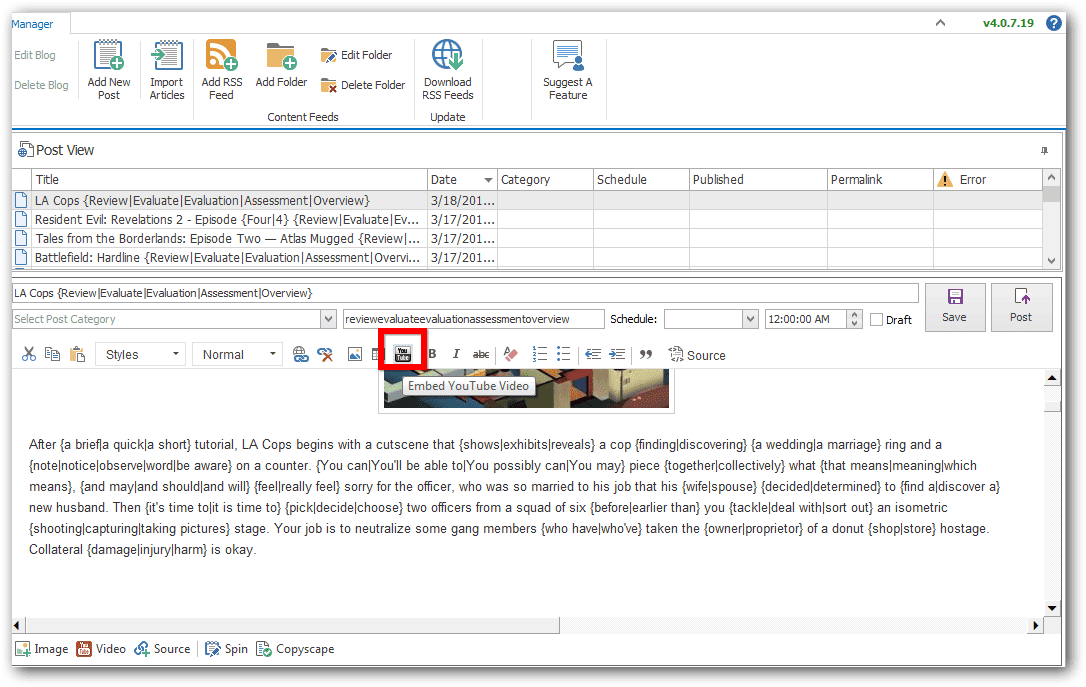
- Either paste the embed code or the video URL in the box provided
- Click the OK button at the bottom of the dialog box (if this is not visible, adjust the screen to make room for the dialog box until the OK button appears)
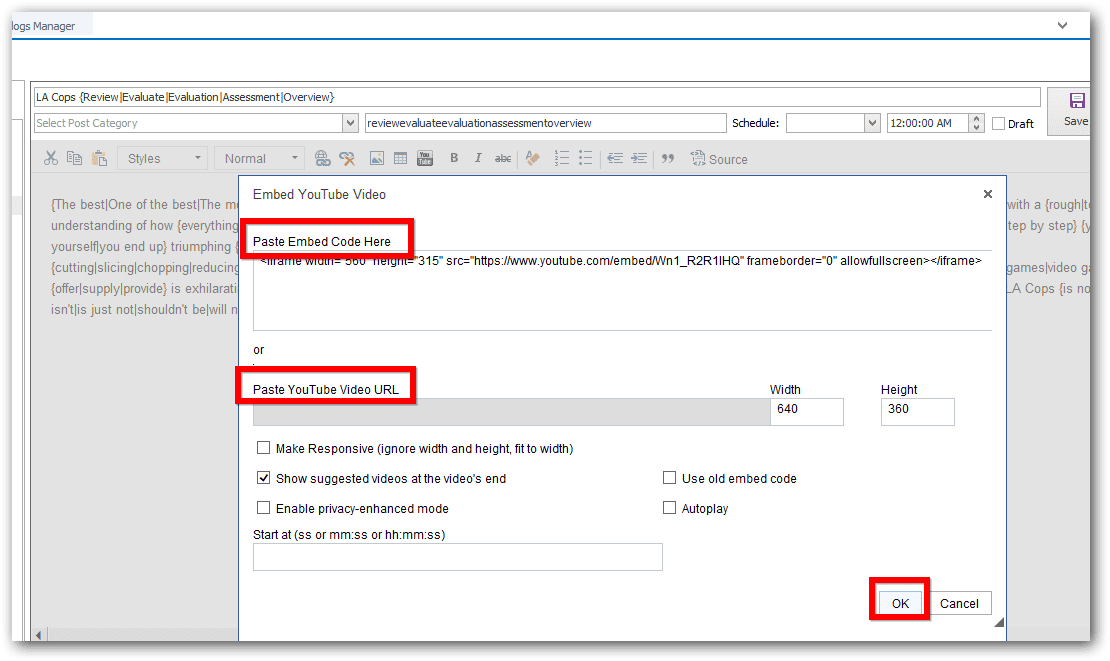
Verify the code was paste correctly:
- When you click on “Source” icon above, you will see the HTML code of the video
- Click on “Source” again and you can see the embedded video
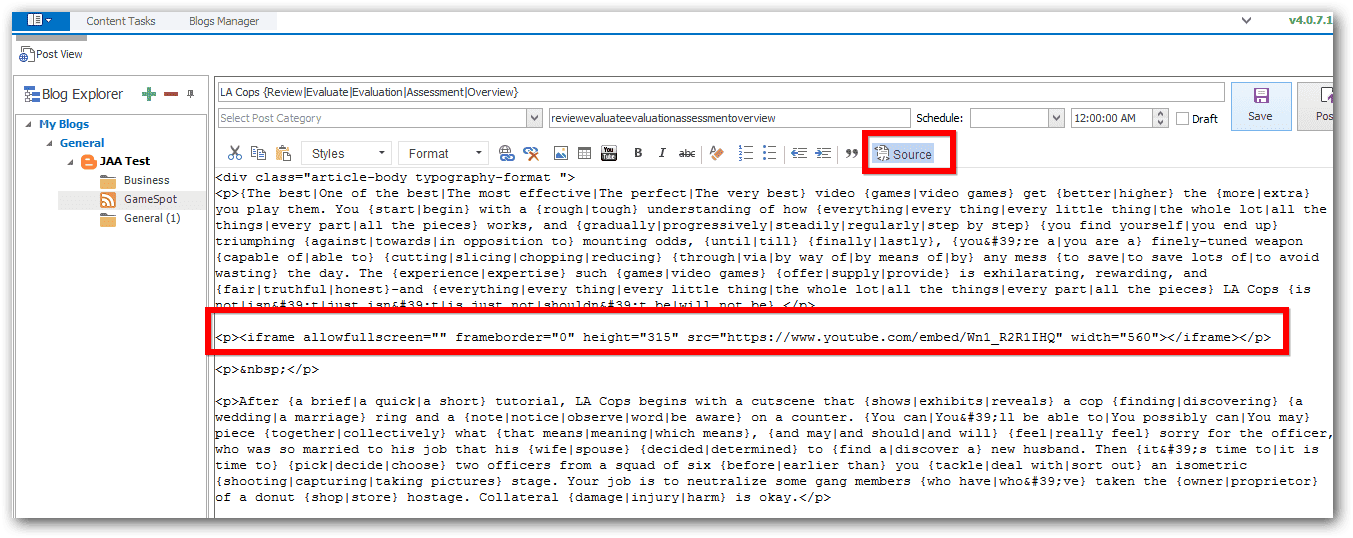
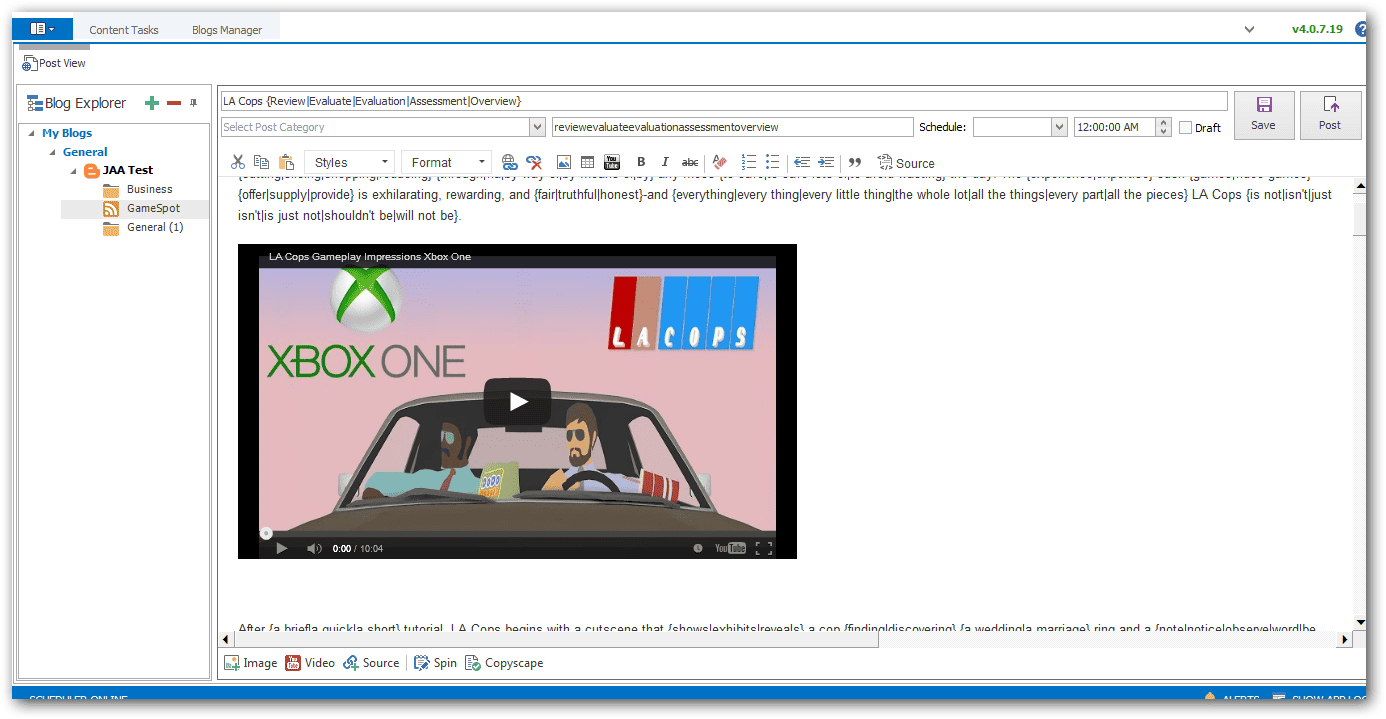
Remember: Save your changes by clicking on "Save"

